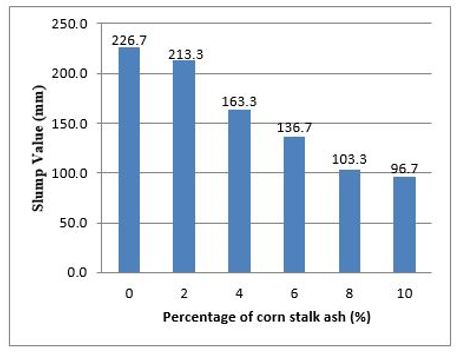The Benefits of Adding Corn Stalk Ash as a Substitution of Some Cement Against of Compressive Strength Concrete
DOI:
https://doi.org/10.25299/jgeet.2019.4.3.2966Keywords:
Concrete, Corn stalk Ash, Compressive Strength, Modulus of Elasticity, Sikament NNAbstract
Concrete is a very important building material used in the world of construction services, and it is generally known that the good and bad properties of concrete can be seen from its compressive strength. Concrete consists of Portland Cement (PC) or other hydraulic cement, fine aggregates, coarse aggregates, and water, with or without using additional materials. Cement is one of the main mixtures of concrete constituents composed of natural resources such as lime (CaO), Silica (SiO₃), alumina (Al2O₃), little magnesia (MgO), and alkali. Silica is also found in corn. according to (Roesmarkam and Yuwono, 2002) corn plants have a Silica content of 20.6%. This study aims to determine the effect of utilization of corn stalk ash on compressive strength and modulus of elasticity of concrete. Cornstalk ash is used as a partial substitute for cement, with a mixture composition of 2%, 4%, 6%, 8%, and 10%.
This study uses SNI 03-2834-2000 for mix design, with the added ingredient of 0.25% sikament NN. Cylindrical test specimen size (150 mm x 300 mm), the specimen was treated and tested at 28 days. Based on research using corn stalk ash 2%, 4%, 6%, 8%, and 10%. either without or using sikament NN the highest compressive strength at 8% is 20.8 Mpa and 20.4 Mpa, and decrease in usage of 10% corn stalk ash which is 18.2 Mpa and 18, 4 Mpa. The highest elastic modulus without or with sikament NN present in 8% ie 21656.14 Mpa and 21607.52 MPa. Modulus of Elasticity value decreased in the use of corn stalks 10% ash is 20366.28 Mpa and 20569.59 MPa. Based on the research, corn stalk ash can replace the role of part of cement in construction using corn stalk ash 8%.
Downloads
References
Antoni dan Paul Nugraha., 2007. Teknologi Beton. Penerbit C.V Andi Offset, Yogyakarta.
ASTM C33, 2004. “Standard Specification For Concrete Aggregates”, Annual Books of ASTM Standard, USA.
ASTM C494 / C494M, 2016. “Standard Specification for Chemical Admixtures for Concrete” Annual Books of ASTM Standard, USA.
Buol et.al, 1980. Food Comotition and Analysis, p.122-123,AVI Publishing, New York
Chandra, 2013. Kajian Kuat Desak dan Modulus Elastisitas Beton Dengan Penambahan Abu Bonggol Jagung Sebagai Zat Additive, Tugas Akhir, Universitas Atma Jaya Yogyakarta, Yogyakarta.
Departemen Pekerjaan Umum, 2005. Pedoman Awal Untuk Perkiraan Proporsi Takaran Campuran.
Dipohusodo, Istimawan, 1999. Struktur Beton Bertulang Berdasarkan SK SNI T-15-1991-03. Jakarta: PT. Gramedia Pustaka Utama.
Ervina, 2013. Isolasi Silika Dari Tongkol Jagung, Tugas akhir, Universitas Pembangunan Nasional, Surabaya.
Juwanto, 2017, Pemanfaatan Bahan Addictive Abu Batang Jagung dan Bonggol Jagung Sebagai Bahan Tambahan Pembuatan Beton Ringan Ramah Lingkungan, Tugas Akhir, Universitas Semarang, Semarang.
Mulyono, T., 2004. Teknologi Beton, Edisi Kedua, Andi, Yogyakarta.
Oladipupo, 2012. Strength Properties of Corn Cob Ash Concrete, Journal of Emerging Trends in Engineering and Applied Sciences (JETEAS) 3 (2).
Ramanuddin, 2010, Pengaruh Kehalusan dan Kadar Abu Sekam Padi Pada Kekuatan Beton dengan Kuat Tekan 50Mpa, Tugas Akhir, Institut Teknologi Nasional Bandung, Bandung.
Roesmarkam dan Yuwono, 2001. Kesuburan dan Pemupukan Tanah Pertanian, Pustaka Buana, Bandung.
Subakti, 1999. Teknologi Beton Dalam Praktek, Jurusan Teknik Sipil, Fakultas Tenik ITS, Surabaya.
Samekto, W., 2001. Teknologi Beton, Edisi Kelima, Kanisius, Yogyakarta.
SNI 03-2834-2000, 2000, Tata Cara Pembuatan Rencana Campuran Beton Normal, Badan Standarisasi Nasional.
SNI 03-2847-2002, 2002, Tata Cara Perhitungan Struktur Beton Untuk Bangun Gedung, Badan Standarisasi Nasional.
SNI 03-1974-1990, 1990, Metode Pengujian Kuat Tekan Beton, Badan Standarisasi Nasional.
Tjokrodimulyo, Kardioyono, 1992. Teknologi Beton. Biro Penerbit, Yogyakarta.

Downloads
Published
Issue
Section
License
Copyright @2019. This is an open-access article distributed under the terms of the Creative Commons Attribution-ShareAlike 4.0 International License which permits unrestricted use, distribution, and reproduction in any medium. Copyrights of all materials published in JGEET are freely available without charge to users or / institution. Users are allowed to read, download, copy, distribute, search, or link to full-text articles in this journal without asking by giving appropriate credit, provide a link to the license, and indicate if changes were made. All of the remix, transform, or build upon the material must distribute the contributions under the same license as the original.










